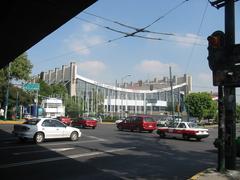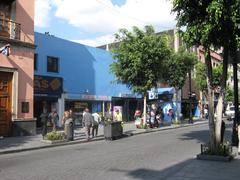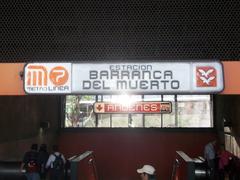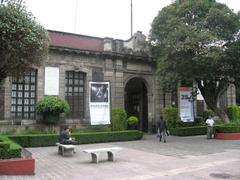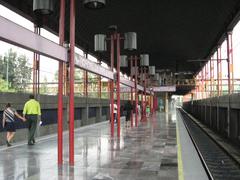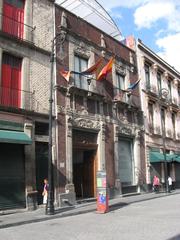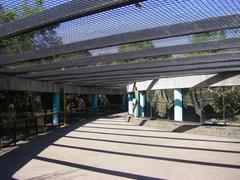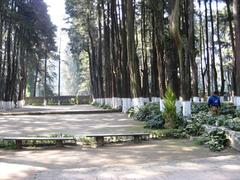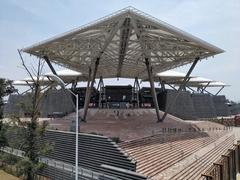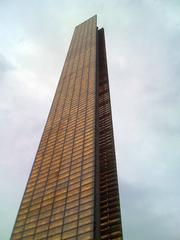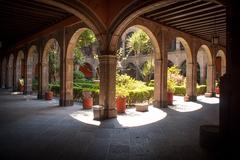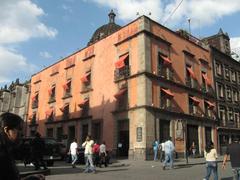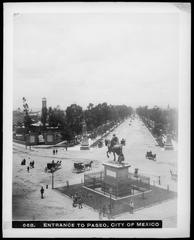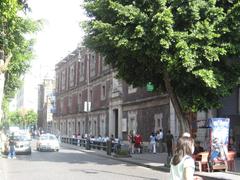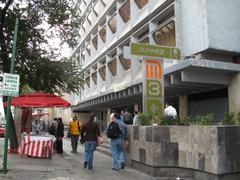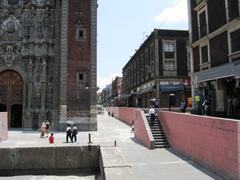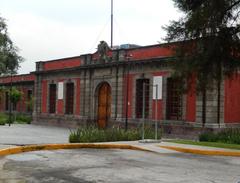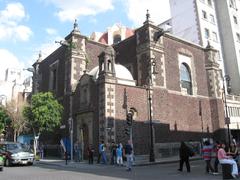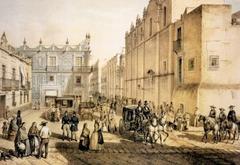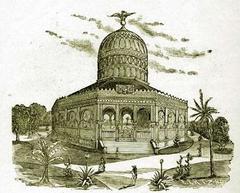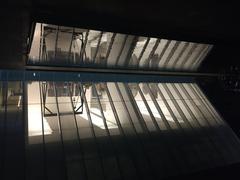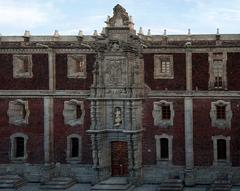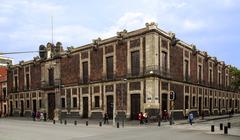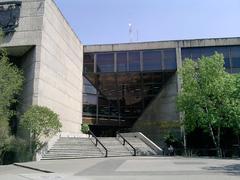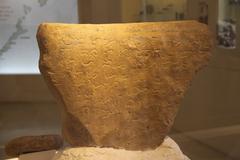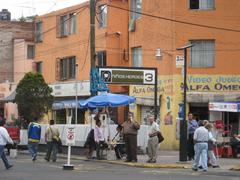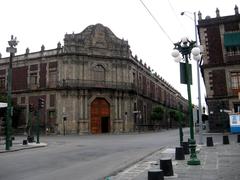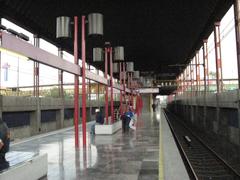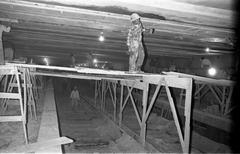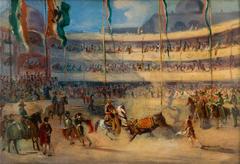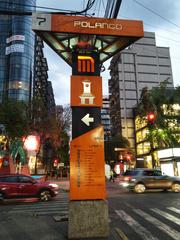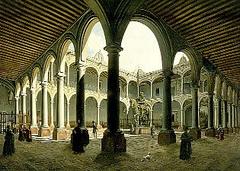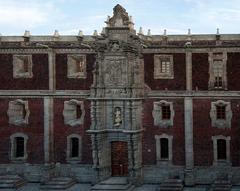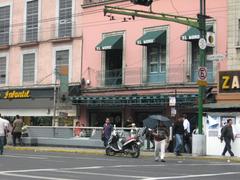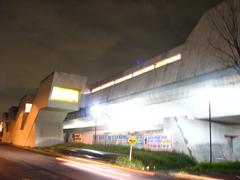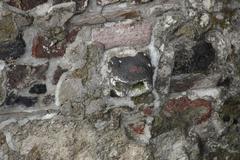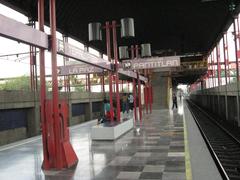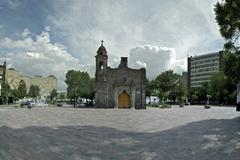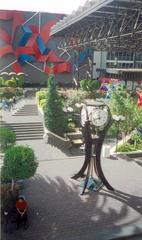Visiting Casa de los Azulejos: Hours, Tickets, and Nearby Attractions
Date: 17/07/2024
Introduction
Casa de los Azulejos, or the House of Tiles, stands as a quintessential symbol of Mexico City’s rich historical and architectural heritage. Nestled in the heart of the city’s historic center, this iconic building has fascinated visitors with its stunning blue and white tile facade and intricate Baroque design for centuries. Originally constructed in the late 16th century as a private residence for the Count of the Valley of Orizaba, the building underwent a significant transformation in the 18th century when it was adorned with its now-famous Talavera tiles from Puebla, reflecting a blend of Spanish and Moorish architectural influences (Sanborns) (Palacio de Bellas Artes).
Beyond its aesthetic allure, Casa de los Azulejos has played a pivotal role in Mexico’s historical narrative. It served as a meeting place for insurgent leaders during the Mexican War of Independence and later as a headquarters for revolutionary forces during the Mexican Revolution. Today, it is preserved as a national monument and serves as a cultural hub, housing a Sanborns restaurant and store. The building also features a grand mural by José Clemente Orozco, adding to its cultural and artistic significance (Sanborns) (Alameda Central).
This comprehensive guide aims to provide travelers with all the essential information needed to visit Casa de los Azulejos, including its visiting hours, ticket prices, travel tips, and nearby attractions. Whether you are an architecture enthusiast, a history buff, or a curious traveler, this guide will enhance your experience at one of Mexico City’s most cherished landmarks.
Table of Contents
History of Casa de los Azulejos
Origins and Early Construction
The Casa de los Azulejos, or the House of Tiles, is a historic building located in the heart of Mexico City. Its origins date back to the late 16th century when it was initially constructed by the Count of the Valley of Orizaba, a prominent member of the Spanish nobility. The building’s initial purpose was to serve as a private residence for the count and his family. The original structure was a typical example of colonial architecture, characterized by its robust and functional design.
Transformation in the 18th Century
The most significant transformation of the Casa de los Azulejos occurred in the 18th century. During this period, the building was acquired by the Count of the Valley of Orizaba’s descendants, who decided to renovate it extensively. The most notable change was the addition of the iconic blue and white tiles that now cover the building’s exterior. These tiles were imported from Puebla, a city renowned for its high-quality ceramics. The decision to adorn the building with tiles was influenced by the Spanish and Moorish architectural styles, which often featured intricate tile work.
Architectural Significance
The Casa de los Azulejos is a prime example of the blending of European and indigenous architectural styles, a hallmark of Mexican colonial architecture. The building’s facade is covered with Talavera tiles, which are a type of tin-glazed ceramic tile that originated in Spain but became highly popular in Mexico. The use of these tiles not only adds to the building’s aesthetic appeal but also serves a practical purpose by protecting the structure from the elements.
The interior of the Casa de los Azulejos is equally impressive, featuring a grand staircase adorned with a mural by the famous Mexican artist José Clemente Orozco. The mural, titled “Omnisciencia,” was completed in 1925 and is a significant example of Mexican muralism, a movement that sought to make art accessible to the public and often featured social and political themes.
Historical Events and Cultural Impact
Throughout its history, the Casa de los Azulejos has been a witness to numerous significant events. During the Mexican War of Independence in the early 19th century, the building served as a meeting place for insurgent leaders. Later, during the Mexican Revolution in the early 20th century, it was used as a headquarters by revolutionary forces.
In the 20th century, the Casa de los Azulejos became a cultural icon, symbolizing the rich history and architectural heritage of Mexico City. It was declared a national monument in 1931, ensuring its preservation for future generations. The building has also been featured in various works of literature and film, further cementing its status as a cultural landmark.
Modern Era and Preservation
In the modern era, the Casa de los Azulejos has been meticulously preserved and restored to maintain its historical and architectural integrity. The building is currently owned by the Sanborns chain of restaurants and department stores, which has taken great care to preserve its historical features while adapting it for contemporary use. The ground floor of the building now houses a popular restaurant, while the upper floors are used for retail and office space.
The preservation efforts have been guided by strict regulations to ensure that any modifications are in keeping with the building’s historical character. This has included the use of traditional materials and techniques in restoration work, as well as careful documentation of the building’s history and architectural features.
Visitor Information
Visiting Hours and Tickets
Casa de los Azulejos is open to visitors daily from 7:00 AM to 1:00 AM. Admission is free, but dining at the Sanborns restaurant or purchasing items from the store will incur costs. Tickets can be purchased on-site or through the official website.
Travel Tips and Accessibility
Located in the heart of Mexico City, the Casa de los Azulejos is easily accessible by public transportation. The nearest metro station is Bellas Artes, which is served by Line 2 (Blue) and Line 8 (Green). The building is wheelchair accessible, and guided tours are available in multiple languages.
Visitor Experience
Today, the Casa de los Azulejos is a popular tourist destination, attracting visitors from around the world who come to admire its stunning architecture and learn about its rich history. The building is located in the historic center of Mexico City, making it easily accessible to tourists. Visitors can explore the building’s interior, including the grand staircase and Orozco’s mural, and enjoy a meal at the restaurant on the ground floor.
The Casa de los Azulejos also hosts various cultural events and exhibitions, providing visitors with an opportunity to engage with Mexico’s vibrant cultural heritage. These events often feature traditional music, dance, and art, offering a glimpse into the country’s rich cultural traditions.
FAQ
Q: What are the visiting hours for Casa de los Azulejos? A: Casa de los Azulejos is open daily from 7:00 AM to 1:00 AM. Be sure to check the official website for any updates.
Q: How much are the tickets to visit Casa de los Azulejos? A: Admission is free; however, dining and purchases at the Sanborns restaurant incur costs. Tickets can be purchased on-site or through the official website.
Q: Is Casa de los Azulejos accessible? A: Yes, the Casa de los Azulejos is wheelchair accessible and offers guided tours in multiple languages.
Conclusion
Casa de los Azulejos is a testament to Mexico’s rich history and architectural heritage. Its stunning tile-covered facade and beautifully preserved interior make it a must-visit destination for anyone interested in Mexican history and culture. The building’s transformation from a private residence to a cultural landmark reflects the dynamic history of Mexico City and the enduring appeal of its architectural treasures. For more information, you can visit the official website of Sanborns, which provides additional details about the building’s history and current use. Don’t miss this stunning landmark on your next visit to Mexico City. For more updates on historical sites, download our mobile app Audiala.
References
- Casa de los Azulejos - History, Visiting Hours, and Tickets in Mexico City, 2023, Author Sanborns
- Visiting Casa de los Azulejos - History, Tickets, and Tips, 2023, Author Palacio de Bellas Artes
- Visitor Tips for Casa de los Azulejos - Hours, Tickets, and Must-See Spots in Mexico City, 2023, Author Metro CDMX







